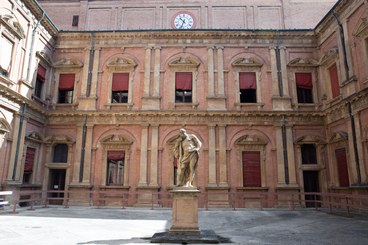Reconstruction of Heritage Structures In-Absentia: Examples of Trajan’s Bridge and Vezir’s Great Bridge

-
Date: 09 JULY 2025 from 17:30 to 19:00
-
Event location: Sala Rossa, Palazzo Marchesini, Via Marsala 26 - Bologna.
-
Type: Lectures
Loss of heritage structures results in a loss of cultural values and at the same time a loss of knowledge. Hence the necessity to reconstruct, physically or digitally, the lost heritage. However, this requires the exploration and development of multidisciplinary innovative approaches in order to solve the challenges related to the absence of the physical object of study. This lecture presents two such examples. Trajan’s Bridge was designed and built in the early 2nd century by Apollodorus of Damascus on the orders of Roman emperor Trajan. It enabled crossing of Danube River between today’s Serbia and Romania, and it was the first kilometer-long bridge ever built in the world. The Vezir’s Great Bridge was the most likely built by a nomadic group of masters of stone in the late 18th or early 19th century, across the Drin River in Albania. The bridge was part of larger infrastructure project ordered by the Vizier of the Pashalik of Scutari (Bushatlli family). It represented one of the first slender and light-weight masonry structures in this region. Both bridges were destroyed and their remains inundated, and little evidence of their appearance exist today. This lecture will present digital reconstructions of the two bridges, and the methodologies used to achieve these reconstructions ‘in-absentia’, that include archival research, historic construction methods, structural analysis, descriptive geometry, but also numismatics, anthropometry, and weaponology.
ATTENDANCE
-
in presence - book your seat
Book your seat within July 9, 12 p.m. The places will be assigned on “first come first served” basis.
Please note that the building is not equipped so as to facilitate access for wheelchair users or people with mobility issues.
